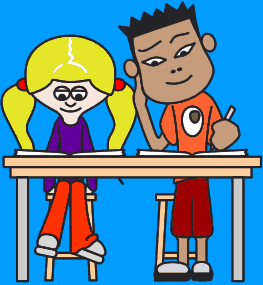- Buder Elementary School
- Second Grade Writing
Weider, Tracy - 3rd Grade
Page Navigation
-

Second Grade Writing
· Prewriting : Students generate ideas for writing by using prewriting techniques, such as drawing and listing key thoughts.
· Drafting: Students write a draft suitable to the topic, audience, and purpose. In drafting, second grade students strive to create clear and coherent sentences and paragraphs that develop a central idea.
· Revising: Students revise and refine the draft for clarity and effectiveness, with the goal of achieving a sense of audience, and using precise word choices and vivid images.
· Editing: Students edit and correct the draft for appropriate grammar, spelling, punctuation, capitalizations, and other features of polished writing.
· Publishing: Students produce, illustrate, and share a variety of compositions.
Grade 2: Writing Purposes
· Discover, develop, and refine ideas.
· Communicate with a variety of audiences.
· Respond to literature and answer math word problems.
· Express themselves in different forms for different purposes, such as lists to record, letters to invite or thank, and stories or poems to entertain, and brief narratives to tell about a personal experience.
Grade 2: Language Conventions
Sentence Structure
—Distinguish between complete and incomplete sentences.
—Use correct subject/verb and noun/pronoun agreement, as well as correct verb tenses in simple and compound sentences.Grammar
—Identify and correctly use various parts of speech, including nouns and verbs.Punctuation
—Use commas in the greeting and closure of a letter and with dates and items in a series.
—Use quotation marks correctly.Capitalization
—Capitalize all proper nouns, words at the beginning of sentences, letter salutations, months and days of the week, and titles and initials of people.Spelling
— Focus on regularly spelled patterns such as consonant-vowel-consonant (CVC) (hop), consonant-vowel-consonant-silent e (CVCe) (hope), and one-syllable words with blends (drop).
—Spell frequently used sight words correctly (e.g., was, were, says, said, who, what, why).
— Write with more proficient spelling of inflectional endings such as plurals and verb tenses.

